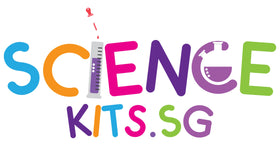
The Benefits of Hands-On Learning: Why Interactive Education Works
In today’s rapidly evolving educational landscape, hands-on learning has emerged as a powerful approach that resonates with students of all ages. Unlike traditional learning methods that often rely heavily on lectures and rote memorization, hands-on learning—also known as experiential or interactive education—engages students directly in the learning process. Here’s why hands-on learning works so well and why it’s becoming a cornerstone of modern education.
1. Enhances Engagement and Motivation
Hands-on learning transforms students from passive listeners into active participants. When students are directly involved in their learning—whether through experiments, projects, or interactive activities—they are more engaged and motivated. This active participation fosters a deeper connection to the material, making learning more enjoyable and meaningful.
Why It Matters: Increased engagement and motivation lead to a more positive attitude toward learning, which can improve overall academic performance.
2. Improves Retention and Understanding
Interactive education goes beyond simply presenting information; it encourages students to apply what they’ve learned. By manipulating materials, experimenting with concepts, or solving real-world problems, students gain a deeper understanding of the subject matter. This experiential approach helps to solidify knowledge and improve retention.
Why It Matters: When students actively engage with the material, they are more likely to remember it and understand how to apply it in different contexts.
3. Develops Critical Thinking and Problem-Solving Skills
Hands-on learning challenges students to think critically and solve problems in real time. Whether they’re working through a complex science experiment, building a model, or engaging in a group project, students learn to analyze situations, consider multiple solutions, and make decisions based on evidence.
Why It Matters: Critical thinking and problem-solving are essential skills for success in both academic and professional settings. Students can acquire and refine these abilities in a safe atmosphere through hands-on learning.
4. Encourages Collaboration and Communication
Many hands-on learning activities involve group work, which fosters collaboration and communication among students. Collaborating on assignments or experiments with peers promotes idea sharing, open listening, and a shared objective. These interactions not only enhance learning but also build essential social skills.
Why It Matters: Being able to work together and communicate clearly is essential in the connected world of today. Hands-on learning helps students develop these interpersonal skills early on.
5. Caters to Different Learning Styles
Not all students learn the same way. Some may thrive with visual aids, while others learn best through auditory or kinesthetic experiences. Hands-on learning caters to a variety of learning styles, making education more inclusive and effective. By engaging multiple senses and allowing students to interact with materials, this approach accommodates diverse learners.
Why It Matters: Personalized learning experiences can help all students, regardless of their preferred learning style, succeed academically.
6. Builds Confidence and Independence
When students take charge of their learning through hands-on activities, they build confidence in their abilities. Successfully completing a project, solving a problem, or understanding a concept through experimentation gives students a sense of accomplishment. This confidence encourages them to take on new challenges and become more independent learners.
Why It Matters: Confidence and independence are key to lifelong learning and success. Hands-on learning helps students develop these traits from a young age.
7. Makes Learning Fun and Relevant
Hands-on learning often involves real-world applications, making education more relevant and relatable to students. Whether they’re growing plants in a garden, programming a robot, or conducting a chemistry experiment, students see the practical applications of their studies. This relevance not only makes learning more fun but also helps students understand the importance of what they’re learning.
Why It Matters: When students see the real-world impact of their education, they are more likely to stay engaged and motivated throughout their academic journey.
8. Encourages Curiosity and Creativity
By letting students explore, experiment, and create, interactive education encourages curiosity and creativity. Instead of passively receiving information, students are encouraged to ask questions, test hypotheses, and come up with their own solutions. This freedom to explore leads to innovation and a deeper love for learning.
Why It Matters: Curiosity and creativity are essential for innovation and problem-solving. Hands-on learning nurtures these qualities, preparing students to be the thinkers and creators of tomorrow.
Conclusion
Hands-on learning offers a dynamic and effective approach to education that resonates with students and prepares them for success in the real world. By enhancing engagement, improving retention, developing critical thinking skills, and fostering creativity, interactive education transforms the learning experience. As educators and parents continue to seek the best ways to prepare students for the future, hands-on learning will undoubtedly play a central role in shaping the next generation of learners and leaders.
